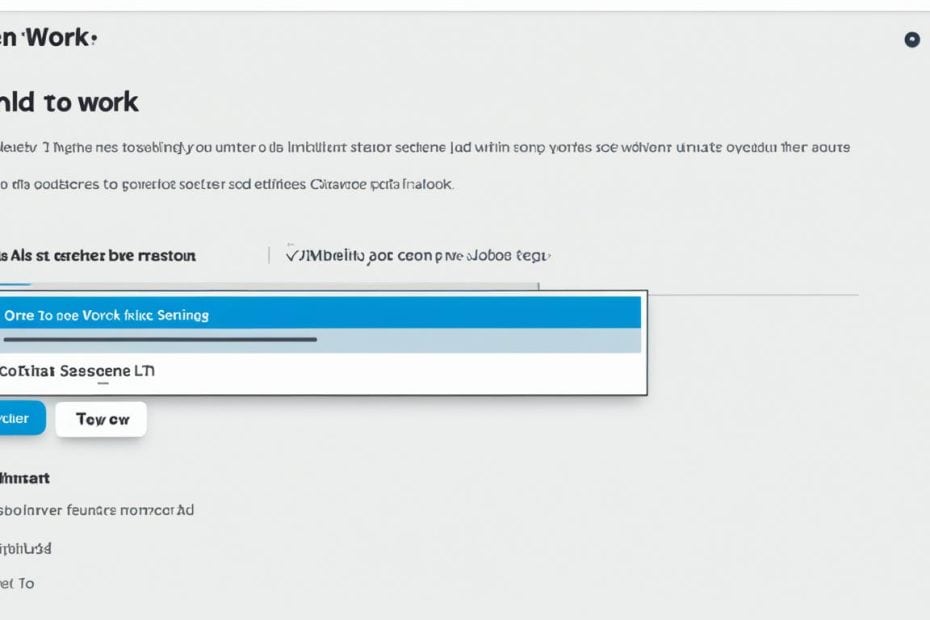If you’re ready to take off the “Open to Work” sign on LinkedIn, this guide can help. Maybe you want to keep your job hunt private or be more specific. Either way, we’ll show you how. You’ll learn a simple way to adjust your career status on LinkedIn.
LinkedIn has many features that can be tricky to navigate. But, with our help, you can make professional changes without drawing much attention. Let’s get started on making your LinkedIn profile more impactful.
Key Takeaways
- Understanding how to customize your LinkedIn visibility settings is essential for professional discretion.
- Removing the “Open to Work” feature can help you control who sees your job-seeking status.
- The guide provides a clear, simple way to adjust your LinkedIn profile without compromising your professional appearance.
- Knowledge of feature management on LinkedIn is key to targeted job searches.
- Tailoring your LinkedIn settings allows for a more strategic approach to networking and job searching.
Understanding the ‘Open to Work’ Feature on LinkedIn
LinkedIn is key for networking and looking for jobs. The ‘Open to Work’ feature helps by showing users are looking. In this section, we will learn how the feature works, its effects on your job search, and what it means for your privacy.
What is ‘Open to Work’ and How Does It Work?
The ‘Open to Work’ feature shows you’re looking for jobs. You can show this publicly or just to recruiters. This choice is up to you and can be set on your profile.
The Implications of Displaying ‘Open to Work’ on Your Profile
Showing ‘Open to Work’ can help you get noticed by hiring managers. But, it might also make it seem like you’re not stable in your current job. It’s important to think about how you use this feature.
Privacy Considerations When Job Searching on LinkedIn
Privacy is really important, especially when you’re looking for a new job. You want to avoid your current employer seeing that you’re looking elsewhere. LinkedIn lets you control who can see that you’re ‘Open to Work.’
Now, let’s look at what you can do:
| Feature | Function | Privacy Level |
|---|---|---|
| Public Visibility | Shows your ‘Open to Work’ status to everyone, including your network and recruiters. | Low |
| Recruiters Only | Limits visibility to recruiters outside your company, safeguarding your search from current employers. | High |
Finding the right privacy settings is important for your job search. ‘Open to Work’ on LinkedIn is flexible. It lets you look for jobs in a way that keeps you comfortable and helps meet your career needs.
How to Take Open to Work Off LinkedIn
If you want to control who knows you’re looking for a job on LinkedIn, it’s easy to do. You might not be looking anymore, or you might only want some people to know. LinkedIn lets you pick how open you are about wanting a job. This gives you more power over who sees your job-seeking status.
Navigating to Your LinkedIn Profile Settings
First, click on your profile settings on LinkedIn. This is where you can tweak your profile, including your job seeking status. Just log into LinkedIn, click your profile picture, and then choose ‘Settings & Privacy’.
Editing Your Current ‘Open to Work’ Preferences
In the settings menu, find the ‘Job seeking preferences’ part. Here, you can edit your Open to Work status. You can decide who sees your job search status – everyone or just some limited audience of people.
Steps for Removing the ‘Open to Work’ Frame from Your Profile Photo
Used the ‘Open to Work’ frame on your photo? You can easily take it off. Just revisit the ‘Job seeking preferences’ section under your profile settings. Click ‘Change’ next to ‘Open to Candidates.’ Then, you can remove the frame or choose a different status.
Options for Sharing Your Job Seeking Status with a Limited Audience
If you want, you can share your job search status with just some recruiters. This keeps your search quiet. You won’t tell everyone you’re open to job offers. This way, you can keep your job search private but still find new opportunities.
By following these steps, job seeking on LinkedIn becomes simple. You can keep things private and control your story in the professional world.

Maximizing Your Professional Profile Beyond ‘Open to Work’
Leaving the ‘Open to Work’ feature on LinkedIn is a big step. It means you need a plan to make your profile even better. By building your brand, you show what you’re great at and draw in good career chances. This means polishing your profile to let your professional self shine. Highlight your top skills, wins, and goals that fit with the jobs you want.
To get noticed more on LinkedIn, you have to do more than just set up a profile. You should take part in discussions, join groups, and post clever stuff. Using features not everyone uses can also help. For example, making your URL unique and showing off key work in the ‘Featured’ section can catch an employer’s eye.
Networking on LinkedIn is not just about adding connections. It’s about talking with people in a way that shows your smarts and worth. Share updates about your work and join chats in your field. This will keep people interested and show you’re up for new opportunities, even after turning off ‘Open to Work’.

